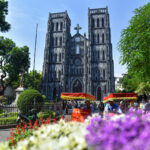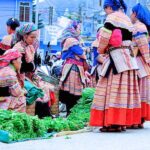Located about 150 km northwest of Thanh Hoa city center, Pho Don market in Lung Niem commune, Ba Thuoc district, has a long history and is one of the oldest highland markets still operating today. To this day, the market is held twice a week, on Thursday and Sunday mornings, as an integral part of the local ethnic community’s lifestyle.
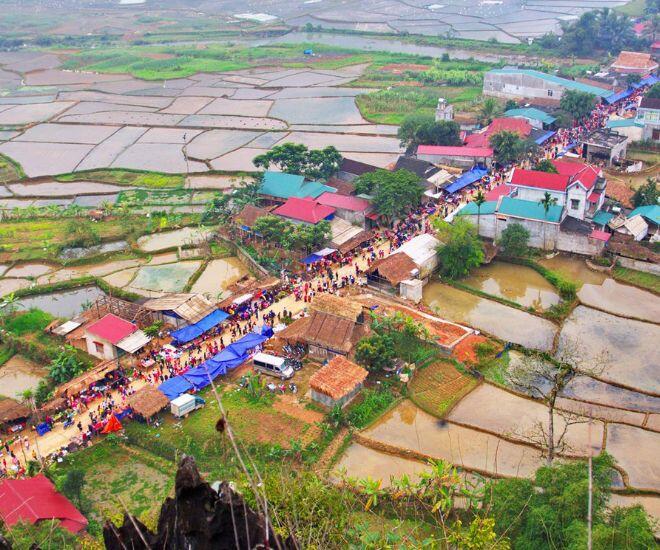
Pho Don market is more than just a place for trading goods; it is a gathering space for the ethnic communities living in Ba Thuoc district, including the Kinh, Muong, and Thai people from communes such as Lung Cao, Co Lung, Thanh Son, and Thanh Lam. Some even travel from Tan Lac and Lac Son districts in Hoa Binh province to attend this market.
To arrive at the market early in the morning, locals usually have to wake up before dawn, preparing their goods to bring to the market. Some walk for tens of kilometers, while others have to cross streams and climb mountains. They all carry the hope of selling their products, but more importantly, they look forward to meeting and chatting with their fellow villagers and friends.

For them, going to the market is not just about trading. It is also an opportunity to engage in cultural exchanges, share information, and catch up with each other after days of working in the fields. Sometimes, they come to the market just to eat a bowl of steamed rice rolls, sit by a pot of fragrant herbal tea, and share stories about their families and villages.
Trading without money
One of the unique aspects of this market that fascinates many tourists is the barter system. People can exchange goods without using money if they feel that the items they have and the ones they need are of equivalent value. For example, a handful of wild vegetables can be traded for a few tam fruits, and a crab caught from the stream can be exchanged for a few cans of rice. All transactions here start with a mutual agreement, reflecting the simplicity and warmth of human connections.
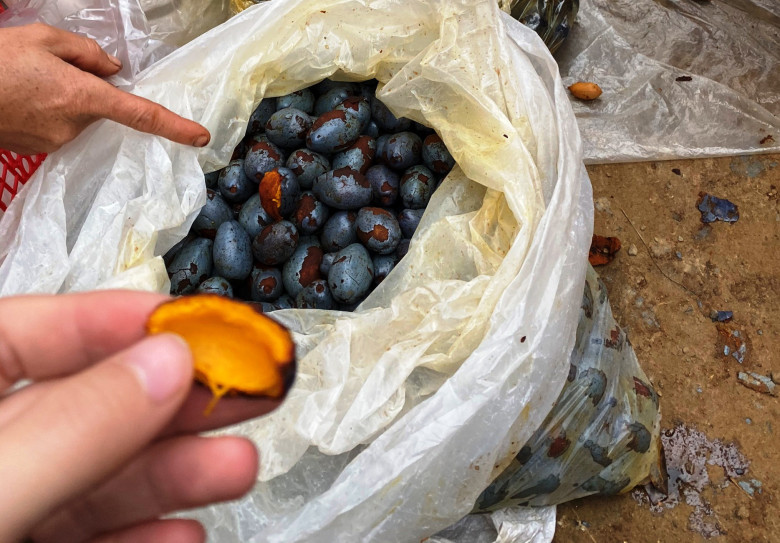
The market offers a diverse range of products, from familiar ingredients in mountain kitchens such as bitter melon, pumpkin, wild apple, and tam fruit to unique specialties like forest fruits, ruou can (a type of rice wine), and even wild mice, a delicacy sought after by many for its rustic flavor.
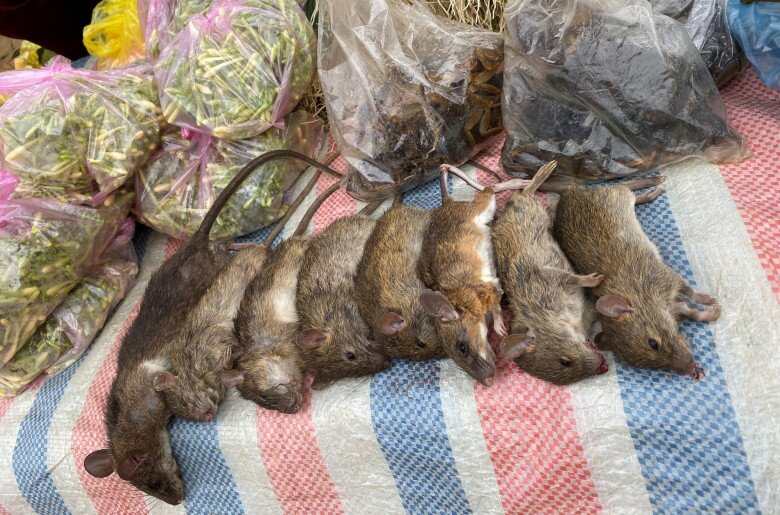

The food sold at the market also carries the distinct flavors of the region. Hot steamed rice rolls, soft leaf cakes wrapped in banana leaves, and ethnic porridge made from mountain rice create a lasting impression on anyone who visits the market, tempting them to stay longer, eat more, and savor the sweet aftertaste of the forest and the hospitality of the highland people.
Preserving a living heritage
Despite the passage of time and the advancements of modern life, the Pho Don market has retained its unique appeal. Each market day attracts hundreds, if not thousands, of people. Besides locals, many tourists from the lowlands, other provinces, and even foreign countries are drawn to the market to witness a vibrant “living painting” amidst the mountains and forests.
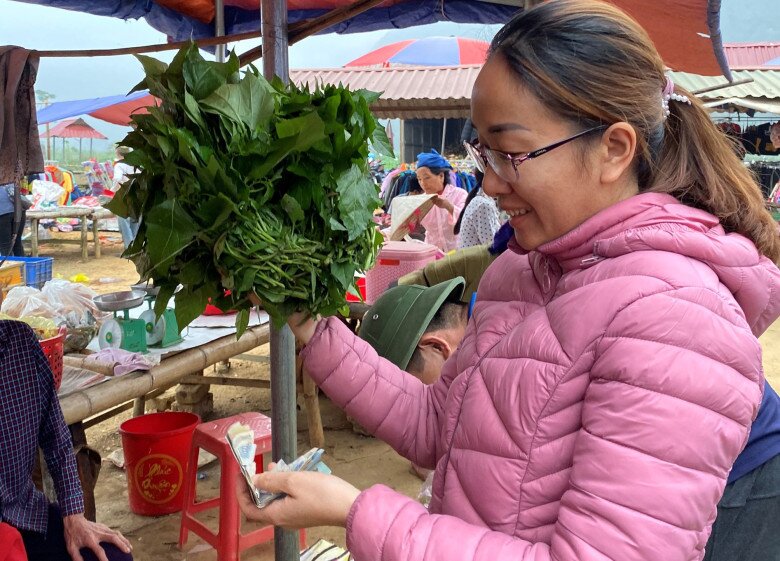
In its community-based tourism development orientation, Ba Thuoc district has positioned the Pho Don market as an important cultural highlight. The local government is taking steps to preserve and promote this unique market as a distinctive feature for visitors to discover when they come to Pu Luong, an increasingly popular green destination in Northern Vietnam.
Without the need for a staged cultural performance, the Pho Don market is a living theater where every simple act of commerce embodies a long-standing cultural value. Each woman carrying her goods to the market becomes an ambassador of her native culture, and every product they bring, whether grown, foraged, or handmade, tells a story connected to the forest and the mountains.
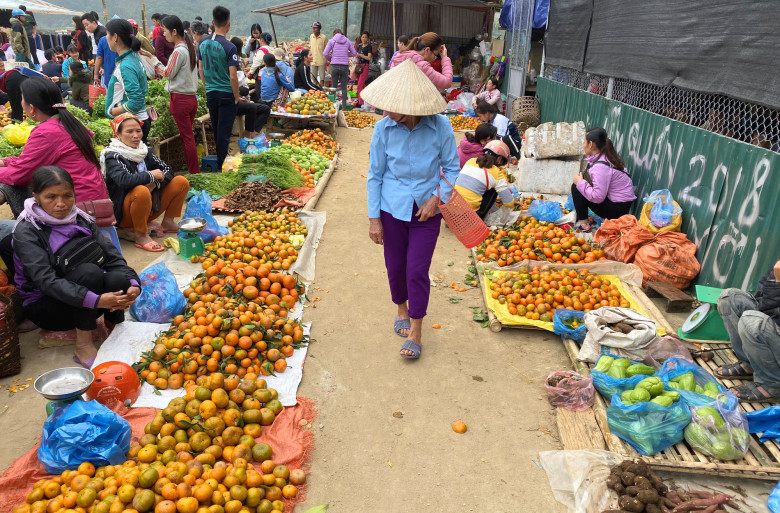
In the rush of modern life, places like the Pho Don market maintain their own pace, offering sincerity and cultural richness. Visitors not only get to enjoy rustic dishes and purchase authentic forest products but also immerse themselves in a vibrant culture where people connect through simple joys, and goods are exchanged with smiles and a nod of mutual agreement.


























